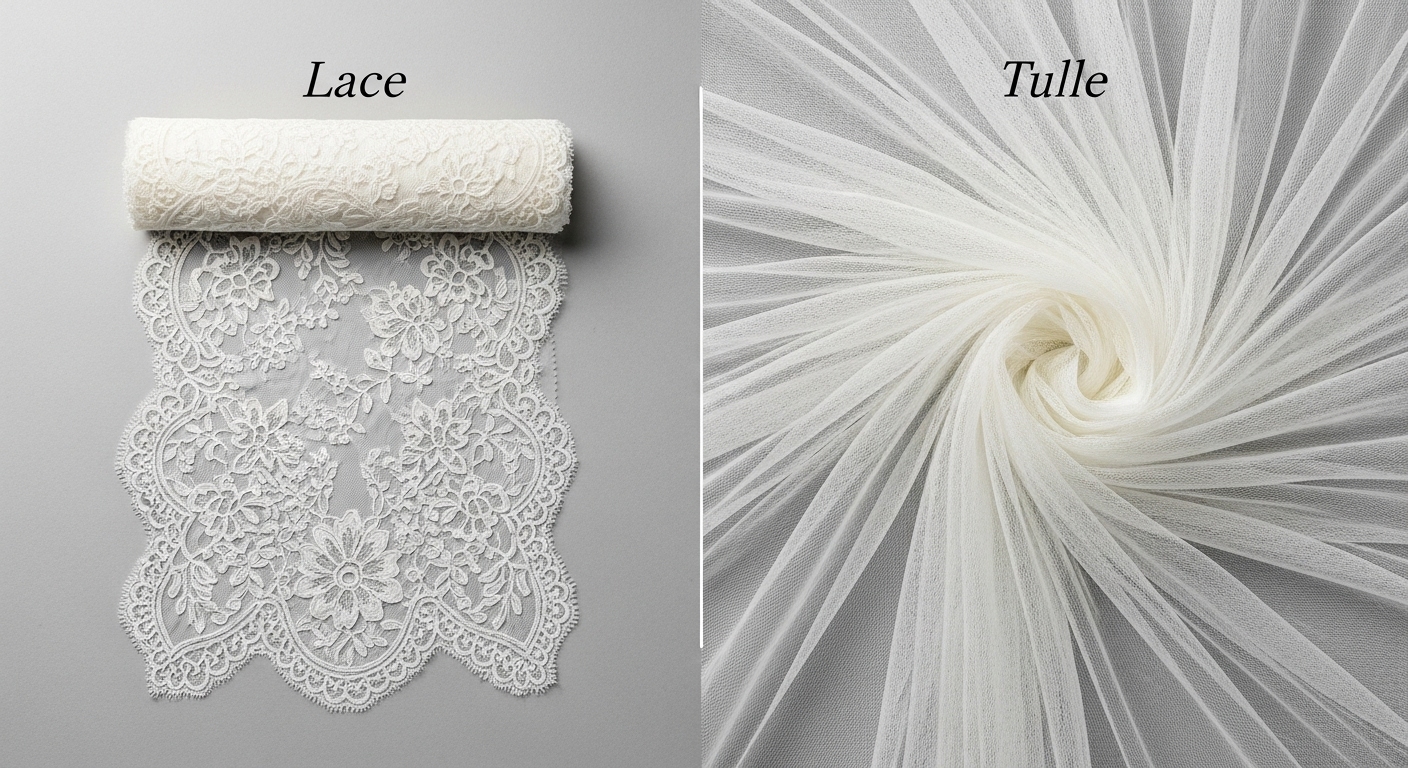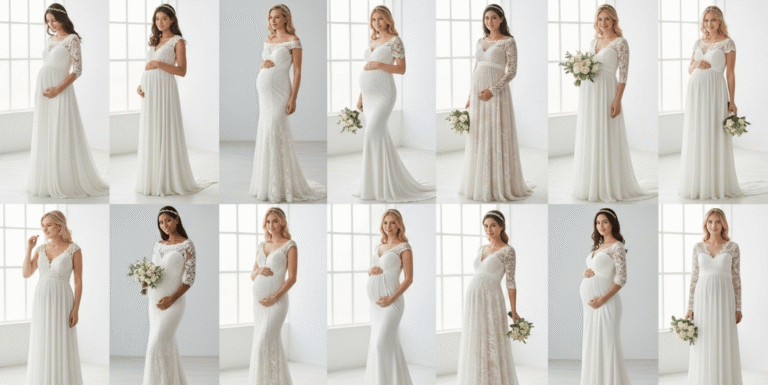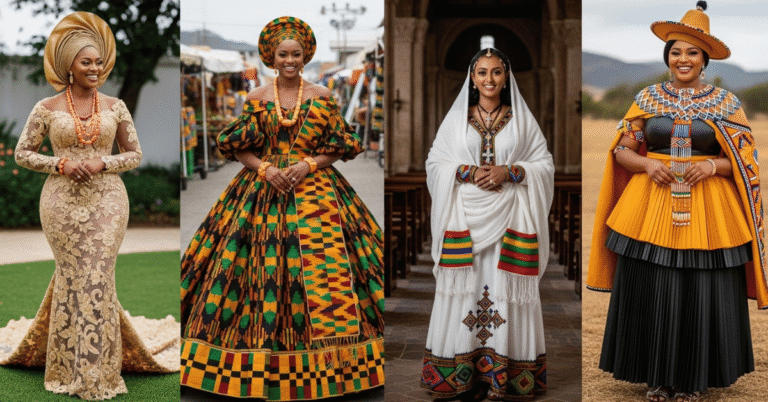Lace vs Tulle: What’s the Difference in Wedding Fabrics?
When brides-to-be start exploring wedding dress fabrics, two names come up again and again: lace and tulle. They often appear together — lace motifs applied over layers of tulle — yet they are very different in structure, feel, and effect. Choosing between them (or knowing how to combine them) is key to finding the perfect gown.
This guide breaks down the main differences between lace and tulle, their strengths, and how designers use them in bridal fashion.
Table of Contents
What is Lace?
Lace is a decorative openwork fabric, often featuring floral, geometric, or abstract motifs. Traditionally handmade, most lace today is machine-produced but retains its intricate beauty. Lace is prized for its romance, texture, and detail.
- Texture: Can be flat (Chantilly) or raised and corded (Alençon).
- Weight: Ranges from feather-light to heavy and structured (Guipure).
- Use in Dresses: Commonly seen on bodices, sleeves, overlays, appliqué trims, and full gowns.
- Mood: Romantic, vintage-inspired, or ornate, depending on style.
What is Tulle?
Tulle is a lightweight, fine netting made from silk, nylon, or polyester. Its sheer, airy quality makes it a staple in bridal fashion, especially for creating volume and movement.
- Texture: Soft and ethereal, with a mesh-like weave.
- Weight: Always lightweight, though available in soft or stiffer versions.
- Use in Dresses: Frequently used for skirts, veils, trains, and layered underlays.
- Mood: Dreamy, floaty, and whimsical.
Key Differences Between Lace and Tulle
| Feature | Lace | Tulle |
|---|---|---|
| Fabric Type | Decorative openwork with motifs | Sheer netting, plain with no motifs |
| Texture | Detailed, textured, sometimes raised | Smooth, airy, soft or crisp |
| Weight | Smooth, airy, soft, or crisp | Always lightweight |
| Coverage | Can provide coverage (dense motifs) | Always sheer, requires layering |
| Design Role | Adds pattern and ornamentation | Adds volume, shape, and movement |
| Common Uses | Bodices, sleeves, overlays, appliqués | Skirts, veils, layers, underlays |
How They Work Together
Lace and tulle are often paired in bridal design. Lace motifs or embroidered lace are applied onto layers of tulle, allowing the lace to appear as though it’s floating on the gown. This combination creates gowns that are both romantic (lace detail) and dreamlike (tulle structure).
Which Should You Choose?
- Choose Lace if…
You love intricate detail, texture, and romantic or vintage styling. Lace works especially well for brides who want statement sleeves, illusion necklines, or heirloom-inspired designs. - Choose Tulle if…
You dream of a voluminous ball gown, a breezy A-line, or a long flowing veil. Tulle creates movement and drama without weight. - Best of Both Worlds
Many modern gowns combine lace and tulle — lace for the decorative artistry, and tulle for the ethereal foundation.
Practical Considerations
- Comfort: Tulle is soft and breathable, but it can snag easily. Lace, depending on type, can feel heavier and less forgiving.
- Alterations: Lace requires precise tailoring to match motifs; tulle is easier to cut but more fragile.
- Season: Lace offers warmth and coverage for cooler months; tulle is breezier for spring and summer weddings.
Conclusion
Lace and tulle may often appear side by side in wedding gowns, but they play very different roles. Lace brings romance, texture, and visual artistry, while tulle provides lightness, volume, and dreamlike movement. Whether you choose lace, tulle, or a combination of both depends on your bridal vision — intricate elegance, ethereal drama, or a balance of the two.

Sophia Lane is a dedicated bridal fashion writer and wedding style consultant with over a decade of experience in helping brides-to-be discover their dream gowns. With a background in fashion journalism and bridal styling, Sophia specialises in writing detailed, research-driven guides on wedding dress styles, fabrics, accessories, and bridal trends.
Her work blends in-depth fashion knowledge, cultural research, and practical advice, ensuring brides receive content that is both inspiring and actionable. She has studied wedding dress history across cultures, analysed emerging eco-friendly bridal trends, and regularly collaborates with designers to stay updated on the latest collections.
Expertise
-
Wedding dress styles, fabrics, and silhouettes
-
Body-shape based bridal styling (petite, plus size, tall, maternity)
-
Sustainable and eco-friendly bridal fashion
-
Bridal accessories, tailoring, and preservation techniques
-
Global cultural wedding attire traditions







